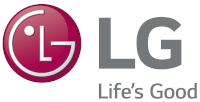KBS, SBS and LG demo 4K UHD ATSC 3.0 at NABShow
Sunday, April 17th, 2016
LG Electronics And Korean Broadcasters Demonstrate Progress On ATSC 3.0 Standard
- Collaborating at 2016 NAB Show, KBS, SBS and LG Emphasize 4K UHD Broadcasting Technologies
LAS VEGAS — On the heels of their historic, world’s first end-to-end 4K television broadcast using the ATSC 3.0 standard, Korean broadcasters KBS and SBS have again joined forces with digital television leader LG Electronics to demonstrate real-world implementation of next-generation broadcasting.
In the Korean broadcasting exhibit in the ATSC 3.0 Broadcast Pavilion at the National Association of Broadcasters (NAB) convention here this week, KBS and SBS are showing how over-the-air ATSC 3.0 will deliver pristine 4K Ultra HD pictures with four times the resolution of conventional HD – on LG 65-inch 4K TVs equipped with the world’s first ATSC 3.0 demodulator/tuner chips.
“Korean terrestrial broadcasters including KBS are preparing to launch the commercial UHD broadcasts with advanced services, including electronic service guides, emergency alerts and video-on-demand, by February 2017. Our collaboration with LG at the NAB Show demonstrates our unique UHD service in the U.S. for the first time,” said Byeong-Ryeol Park, technology executive managing director at KBS, which has been conducting terrestrial UHD experimental broadcasts since 2012.
SBS Technical Director Dr. Young-Soo Park said the ATSC 3.0 demonstrations at the NAB Show set the stage for implementation of next-generation broadcasting in Korea in advance of over-the-air 4K broadcasts of 2018 Winter Olympic Games. “With Korea preparing to launch terrestrial UHD TV commercial services in early 2017, we hope our alliance with LG at the NAB Show inspires other broadcasters around the world to have the confidence to also move ahead with next-gen broadcasting.”
ATSC 3.0’s progress in Korea is in fact significant for the United States, according to Sam Matheny, the NAB’s executive vice president and chief technology officer. “As U.S. broadcasters consider their ATSC 3.0-related business models and implementation plans, there is keen interest in South Korea and their fast-track launch of next-generation television broadcasting,” he said.
Combining broadcasting and broadband for the first time, ATSC 3.0 represents the world’s first Internet Protocol (IP) based broadcasting system. The KBS-SBS-LG demonstrations at the NAB Show include next-generation IP technologies based on the DASH (Dynamic Adaptive Streaming over HTTP) streaming media format and ROUTE (Real-Time Object Delivery Over Unidirectional Transport) IP delivery protocol.
“ATSC 3.0 represents the next frontier for broadcast television. Korean broadcasters and manufacturers take great pride in their important role in developing, demonstrating and implementing next-gen broadcasting in Korea and in the U.S.,” said Dr. K.Y. Kwak, executive vice president, LG’s Advanced Standard Research & Development Lab.
The KBS and SBS demonstrations with LG at the NAB Show build on the success of real-world 4K ATSC 3.0 broadcast field tests in Korea. Just a couple of weeks ago, for example, LG and KBS demonstrated for the first time in the world the superiority of the DASH/ROUTE IP technologies in delivering advanced emergency alerting and electronic service guide data in an end-to-end live terrestrial broadcast.
The world’s first end-to-end broadcast of 4K Ultra HD, conducted by SBS and LG in South Korea earlier this year, also represented a major milestone. Past demonstrations simply used pre-recorded material loaded directly to a transmitter, while this test broadcast featured a live camera feed with real-time IP transmissions from the SBS network studio in Mokdong to the broadcaster’s Gwanak Mountain transmitter. The IP signals transmitted over the air on SBS Channel 53 were then received using a simple antenna and decoded by a 4K Ultra HDTV ATSC 3.0 receiver developed by LG Electronics.
Latest News
- Barb to start reporting TV-set viewing of YouTube channels
- SAT FILM selects multi-DRM from CryptoGuard
- Qvest and ARABSAT to launch OTT streaming platform
- ArabyAds & LG Ad Solutions partner with TVekstra in Turkey
- Freeview NZ satellite TV service to move to Koreasat 6
- Comscore expands YouTube CTV measurement internationally
